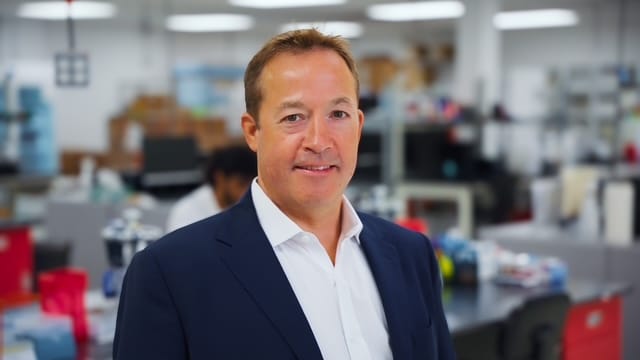You’ve likely heard the term “forever chemicals” in the news or from concerned clients. Officially known as PFAS (per- and polyfluoroalkyl substances), these chemicals are everywhere, from nonstick cookware to water supplies. They don’t break down easily in the environment or the body, which raises big questions about long-term health implications.
As a health coach, you don’t need to be a toxicologist to support your clients. What you do need is a solid understanding of the basics, how these chemicals may impact well-being, and what lifestyle strategies can empower clients to reduce their exposure.
The most important thing to remember is that reducing exposure doesn’t require perfection. What matters is helping clients take practical, realistic steps to make meaningful progress.

What Are Forever Chemicals?
PFAS are a large group of synthetic chemicals used since the 1940s to make products resistant to heat, water, and oil. You’ll find them in:
Nonstick pans and kitchenware
Stain- and water-resistant clothing or furniture
Food packaging (like microwave popcorn bags or fast-food wrappers)
Cleaning products
Cosmetics (like makeup, personal care, and toiletry products)
Contaminated water supplies
Because they don’t naturally degrade, PFAS accumulate in the environment, wildlife, and human tissue, earning the name “forever chemicals.”
Why Health Coaches Should Care
Research links PFAS exposure to health concerns including:
- Immune system disruption
- Hormone imbalance
- Fertility challenges
- Developmental issues in children
- Increased risk of certain cancers
- Elevated cholesterol and blood pressure

Clients may already be hearing about these risks in the media and feeling anxious. Health coaches can help by translating the science into practical steps, easing fear, and guiding clients toward realistic, sustainable plans.
How to Talk About PFAS With Clients
When PFAS comes up in conversation, here’s how you can frame it:
- Emphasize progress over perfection: Avoid fueling anxiety. Rather, remind clients it’s about lowering the burden where possible, not eliminating exposure completely and perfectly.
- Acknowledge the concern: Clients may feel overwhelmed when they realize how widespread these chemicals are. Recognize their feelings.
- Focus on what’s in their control: Health coaching emphasizes empowerment. Even small lifestyle shifts can reduce exposure.

Practical Tips to Reduce Exposure
Here are evidence-based strategies you can share with clients:
- Switch cookware: Choose stainless steel, cast iron, or ceramic over nonstick pans.
- Filter drinking water: Activated carbon or reverse osmosis filters can reduce PFAS levels in water.
- Be mindful of food packaging: Limit takeout containers, microwave popcorn, and fast-food wrappers.
- Check labels on personal care products: Avoid items with “fluoro” or “PTFE” in the ingredient list.
- Clothing and Wearables: PFAS can also show up in stain-resistant clothing, yoga leggings, and even some smartwatch bands. Encourage clients to look for natural fabrics or PFAS-free certifications when possible.
- Choose safer textiles: Skip stain-resistant sprays and clothing labeled as water-repellent.
These changes not only reduce PFAS exposure but also align with functional medicine’s focus on reducing toxic load and supporting long-term resilience.
The Health Coach’s Role

You don’t need to provide medical advice about PFAS. Instead, you can:
- Educate: Help clients understand where PFAS might be hiding in their daily lives.
- Empower: Guide them toward practical substitutions that fit their lifestyle.
- Encourage: Support behavior change with curiosity, compassion, and accountability.
- Collaborate: Encourage clients to share PFAS-related health concerns with their healthcare provider.
Key Takeaways for Health Coaches
Forever chemicals are complex, but your role as a health coach isn’t to have all the answers. Your role is to help clients feel informed and capable of making small, meaningful choices that support their health. By focusing on what’s within reach, you empower clients to build healthier, more resilient lives despite environmental challenges.
For a deeper dive into other everyday exposures and strategies you can share with clients, explore our article Environmental Toxins 101.
Next Steps for Coaches & Recommended Resources
Want more practical tools for guiding clients through today’s health challenges? Explore FMCA’s training and resources designed to keep you at the forefront of functional medicine and coaching.
Recommended Resources
For clients who want to learn more, Detoxify: Your Guide to Reducing Harmful Chemicals in Your Body by Dr. Aly Cohen is a practical, science-based book that translates toxicology into everyday strategies.
You can also check out our Health Coach Talk episode with Dr. Aly, Defending Against Environmental Toxins, With Dr. Aly Cohen:
Sources
- U.S. Environmental Protection Agency (EPA). Our Current Understanding of Human Health and Environmental Risks of PFAS. epa.gov
- Agency for Toxic Substances and Disease Registry (ATSDR). PFAS Information for Clinicians: Health Effects. atsdr.cdc.gov
- Agency for Toxic Substances and Disease Registry (ATSDR). How PFAS Impacts Your Health. atsdr.cdc.gov
- National Institute of Environmental Health Sciences (NIEHS). Perfluoroalkyl and Polyfluoroalkyl Substances (PFAS). niehs.nih.gov
- U.S. Food and Drug Administration (FDA). PFAS: Per- and Polyfluoroalkyl Substances and Bioaccumulation in Humans and Animals. fda.gov
- Minnesota Department of Health. PFAS Summary. health.state.mn.us
Our Latest Blogs
-

Food Sensitivity Testing 101: Supporting Clients with Inflammation and Gut Issues
Read Full Article: Food Sensitivity Testing 101: Supporting Clients with Inflammation and Gut Issues -

Protein 101: The Health Coach’s Guide
Read Full Article: Protein 101: The Health Coach’s Guide -

Women’s Health and the Vaginal Microbiome: A Probiotic Breakthrough
Read Full Article: Women’s Health and the Vaginal Microbiome: A Probiotic Breakthrough

